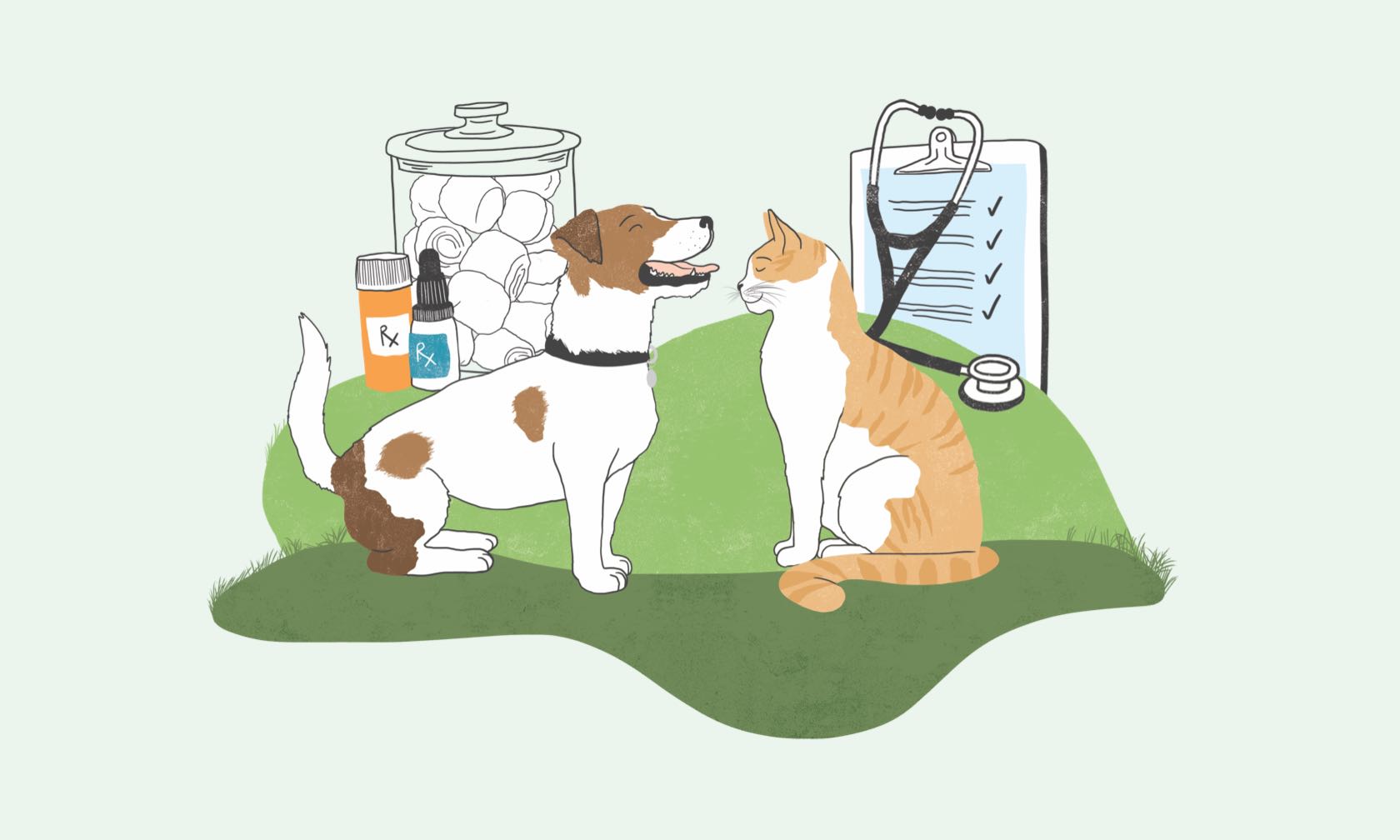Nothing says happiness like a dog tail wagging crazily — but it can be upsetting when your beloved dog suffers from a tail injury and the wagging stops. Your dog's tail includes bones, muscles, vessels, and nerves, all of which are susceptible to injury. That's why it's important to know a bit about common tail injuries and what actions to take to get them happily wagging again.
Signs Of a Dog Tail Injury
Dog tail injuries can be a sign of some serious diseases. If you notice any of the following signs, it's time for a veterinary visit.
- Tail held in an abnormal position
- Changes in how they wag the tail (one-sided versus side-to-side)
- Changes in how they walk
- Continuously biting or licking their tail
- Hair loss on the tail or near the base
- Being protective of their tail
- Complete inability to move the tail
- Tail is limp and hanging
- Signs of pain such as whimpering, whining, or other vocalizations
- Changes in potty habits
Common Dog Tail Injuries
Here are a few of the more common dog tail injuries.
Fractures
When you look at a group of dogs, you may notice variations in the length of their tails. The tail bones can break like any other bone in the body. The most common causes of tail fractures are:
- Hit by a car
- Fall from an elevation such as a bed, sofa, or porch
- Caught in a slamming door
- Run over by a bike or car
- Caught under a rocking chair
- Stepped on
- Bitten by another dog
The seriousness of the break is based on its location along the tail. Tail tip fractures usually heal well without any treatment other than pain medication. Some dogs will have a bump or bend at the fracture site once it has healed. When the fracture is near the base of the tail, it's often more serious since these fractures often include nerve damage. These generally require surgical intervention. Some injuries result in the bones being crushed. In these instances, the tail may have to be amputated.
Abrasions
Dogs commonly get abrasions on their tails. These are superficial wounds and are characterized by:
- Hair loss
- Inflamed skin that is usually red
- Mild bleeding
- Scabbing
Abrasions are usually caused by trauma, the tail rubbing on rough surfaces (like concrete or fences), or getting the tail caught on or under something.
Mild abrasions can often be treated at home. The area should be thoroughly cleansed with antimicrobial soap and warm water. Once dry, apply an antibiotic ointment or spray. Pet owners should never wrap a tail, as it can cause the tail to become necrotic if they do it wrong. Repeat this process daily or every other day. Prevent your dog from chewing at the area with an Elizabethan collar.
Your dog will need veterinary care for proper healing if the abrasion bleeds a lot, swells, or an odor develops.
Lacerations
Lacerations are more severe wounds than abrasions. These cuts can be smooth, jagged/irregular, expose the underlying muscle, vessels, and bone, and often bleed.
There are several different ways lacerations can occur. They can result from traumatic events such as being hit by a car or a dog fight. They can be self-inflicted due to behavioral issues, allergies, or anal gland infections. Regardless of the cause, lacerations often require medical care.
The length and depth of the laceration will determine whether it will be treated conservatively (wound care and bandaging) or surgically. Most lacerations require antibiotics and pain medication.
In cases where behavioral problems are the cause, seeking help from a certified dog trainer and behavior consultant or veterinary behaviorist is important to prevent future trauma.
Happy Tail Syndrome
Happy tail syndrome may sound like something you want your dog to have, but it isn’t. This condition often affects dogs with long tails, such as Labradors, Pitbulls, Greyhounds, and hunting breeds who exuberantly wag their tail and continuously hit it on solid objects like tables, trees, walls, and fences. The result is a tail with bleeding ulcers and exposed nerves that cannot heal due to repeat trauma.
In some cases, conservative treatment with topical antibiotics, bandaging done by your veterinary team, pain medication, and mild sedatives can work. Surgical tail shortening may be necessary for some dogs with this condition.
Limber Tail
Limber tail (also called acute caudal myopathy) is a painful muscle condition where your dog’s tail suffers the negative effects of overexertion. The muscles essentially become sprained or strained. You can compare it to the muscle pain weekend warriors sometimes feel. Since the base of the tail is so painful, your dog avoids being touched, and the rest of the tail hangs limp. The symptoms are similar to those of a fracture or infection. Therefore, it is best to have your dog evaluated by a veterinarian for appropriate treatment.
Prolonged swimming, active hunting, and vigorous play are a few of the activities that can cause limber tail. This condition has been noted in dogs exposed to very cold weather, cold water, or climate changes. Dogs confined to crates for prolonged periods can also develop limber tail.
The treatment involves rest and anti-inflammatory pain medication.
ZPC-02498





